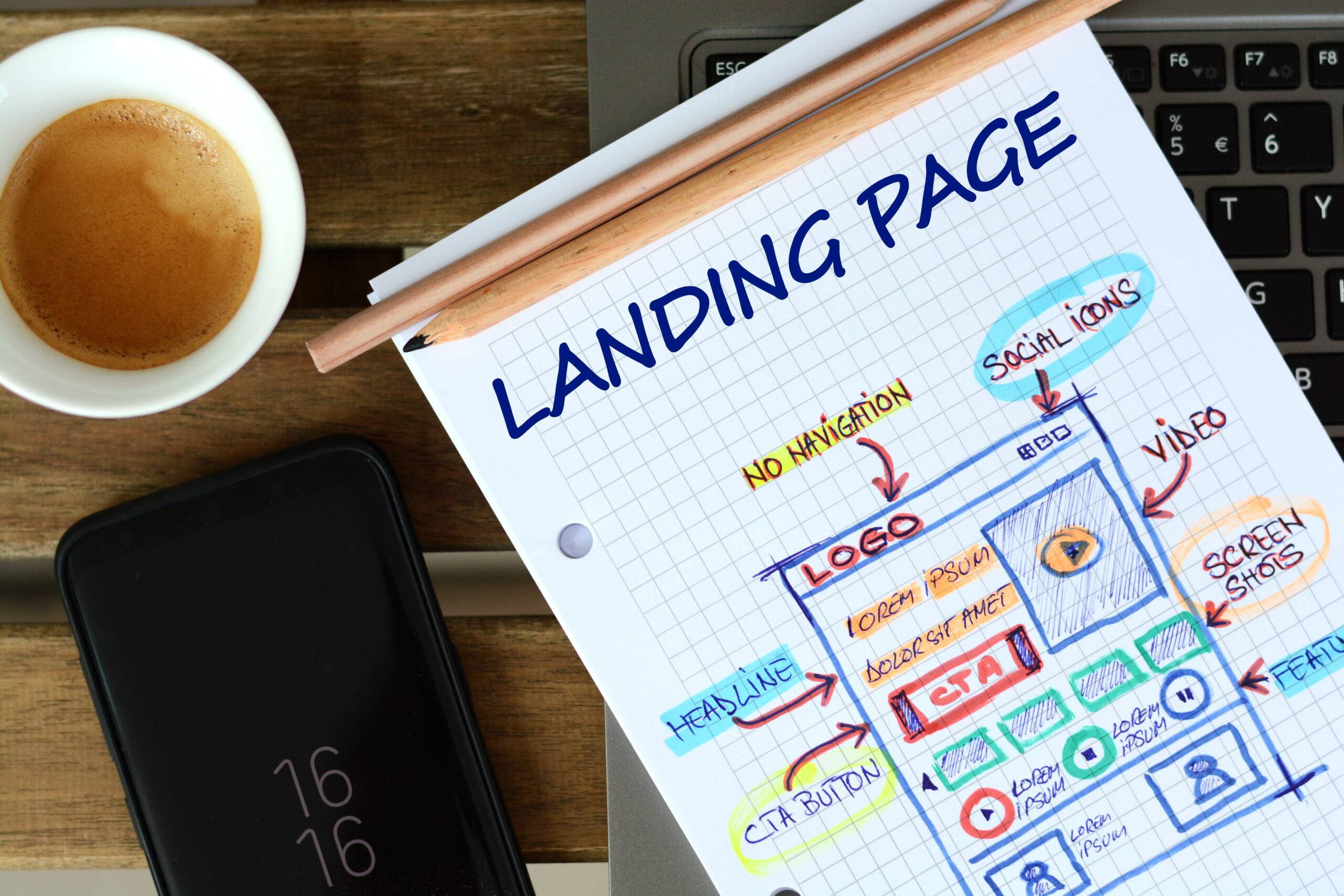How to Create High-Converting Landing Pages in 2023
Why your landing pages may be failing
There are a number of reasons why landing pages fail to convert. Some of the most common reasons include:
- Poorly targeted landing pages: Landing pages should be targeted to a specific audience. If the landing page is not relevant to the visitor’s interests, they are less likely to take action.
- A confusing or cluttered design: A landing page should be easy to understand and navigate. If the design is confusing or cluttered, visitors will be less likely to take action.
- A weak call to action: The call to action should be clear and concise. Visitors should know exactly what you want them to do.
- No urgency: Visitors need to feel a sense of urgency to take action. If there is no sense of urgency, they may put off taking action until later, or they may not take action at all.
How to Improve CRO on Landing Pages
If you want to improve your landing page conversion rate, you need to address the reasons why your landing pages are not converting. Is your content confusing, relevant to your target audience, valuable to them, original? By following the steps below, you can significantly improve your conversion rate to get more leads and sales.
What is a landing page?
A landing page is a web page that is designed to convert visitors into leads or customers. It is typically the first page that visitors see after clicking on an ad, email, or other marketing campaign.
A good landing page will have a clear and concise message, a strong call to action, and a design that is easy to understand and navigate.
Why are landing pages important?
Landing pages are important because they can help you to:
- Generate leads: A well-designed landing page can help you to collect contact information from visitors, such as their name, email address, and phone number. This information can then be used to follow up with visitors and nurture them into customers.
- Increase sales: A landing page can also be used to increase sales by promoting a product or service. By offering a discount, free trial, or other incentive, you can encourage visitors to take the next step and make a purchase.
- Improve brand awareness: A landing page can also be used to improve brand awareness by providing visitors with information about your company and its products or services. This can help to position you as an expert in your field and attract new customers.
How to create a high-converting landing page
There are a number of things you can do to create a high-converting landing page.
Here are the steps:
Step 1 – Target your landing pages to a specific audience.
Make sure you know who your audience is, what they like, what they need, what they enjoy. This type of knowledge is power! Build your landing page with these relevant data points to target the visitor’s interests. Tailoring your landing pages to a specific audience or persona, such as people who have expressed an interest in your product or service, or people who have visited certain pages on your website, will boost conversion.
Targeting your landing pages to a specific audience is important because it helps you to ensure that your landing page is relevant to the visitor’s interests, which moves them to be more likely to take action, such as signing up for your newsletter, downloading a whitepaper, or making a purchase.
There are a few different ways to target your landing pages to a specific audience. One way is to use the targeting options that are available in your advertising platform. For example, if you are running a Google Ads campaign, you can target your ads to people who have expressed an interest in your product or service by using the “Keywords” and “Interests” targeting options.
Another way to target your landing pages to a specific audience is to use the analytics tools that are available on your website. For example, if you are using Google Analytics, you can track the pages that visitors are visiting on your website. This information can help you to identify the pages that are most relevant to your target audience.
Once you have identified your target audience, you can create landing pages that are specifically designed for them. For example, if you are targeting people who are interested in learning more about your product, you can create a landing page that provides information about your product and its benefits – include a short video or visual aid to help the consumer fully understand function and features of what you’re offering.
By targeting your landing pages to a specific audience, you can increase your chances of converting visitors into leads or customers.
Here are some additional tips for targeting your landing pages to a specific audience:
- Use clear and concise language that is relevant to your target audience.
- Use images and videos that appeal to your target audience again based on your persona data.
- Use a tailored call to action that is specific to your target audience. Think about how they shop and the way they may prefer to engage.
- Test different versions of your landing pages to see what works best for your target audience.
Step 2 – Keep your landing page design simple and easy to navigate.
Visitors should be able to find what they are looking for quickly and easily. Use a clear and concise headline, and break up your text into short paragraphs. Use images and videos to break up the text and make your landing page more visually appealing.
Simple doesn’t mean short in the sense of the length of the overall page. Your landing page could be quite lengthy and have great success. You’ll want to track the scroll length of your visitor to start to understand why they lose interest. From that data you can optimize your landing page for improvements.
Step 3 – Use a strong call to action.
Make sure your call to action is clear and concise. Visitors should know exactly what you want them to do. Use strong verbs, such as “download,” “sign up,” or “buy.”Consider your visitors’ search intent. Based on their search term you can direct them (using your settings in the ads platform) to a specific landing page that provides them their most desired outcome.
As an example, if you’re using the search term “How to make a landing page” they’re more likely trying to find step-by-step information or instructions. Perhaps they even need to learn about resources and tools in the industry, or best practices.
Step 4 – Create a sense of urgency.
Visitors need to feel like they need to take action now. Use phrases like “limited time offer” or “act now” to create a sense of urgency. Be careful to not feel too spammy or pushy. There’s a fine line here. Mentioning that there are only a limited number of items available can be a less aggressive way to nudge your consumer to take action.
Most marketers stay away from adding this component because we don’t like being “sold to” why would our consumer? Well, the psychology behind adding a strong sense of urgency to your landing page content or call to action is based on the principle of scarcity. Scarcity is a powerful motivator because it creates a sense of fear of missing out (FOMO). When people feel like they might miss out on something valuable, they are more likely to take action.
Step 5 – Test and optimize your landing pages.
Test different versions of your landing pages to see what works best for each persona or audience. You can use A/B testing to compare different versions of your landing page to see which one converts better.
A/B testing is a great way to improve your landing pages and increase conversions. Here are a few examples of A/B tests you can run on landing pages:
- Headline: Test different headlines to see which one gets the most clicks.
- Imagery: Test different images to see which one resonates with your audience the most.
- Call to action: Test different calls to action to see which one gets the most clicks.
- Benefits: Test different benefits to see which ones are most appealing to your audience.
- Testimonials: Test different testimonials to see which ones are most convincing.
- Price: Test different prices to see which one converts the most.
- Guarantee: Test different guarantees to see which one gives visitors the most confidence.
- Scarcity: Test different scarcity messages to see which one creates the most urgency.
- Urgency: Test different urgency messages to see which one motivates visitors to take action.
By testing different elements of your landing pages, you can find what works best for your audience and increase your conversion rate.
Here are some additional tips for running A/B tests on landing pages:
- Test only one variable at a time: This will help you to isolate the impact of each variable on your conversion rate.
- Test for a significant amount of time: It can take time to collect enough data to determine which version of your landing page is more effective.
- Use a landing page builder: A landing page builder can make it easy to create and test different versions of your landing pages.
Additional tips for creating high-converting landing pages
Here are some additional tips for creating high-converting landing pages:
- Use a strong headline. Your headline is the first thing visitors will see, so it’s important to make it strong and attention-grabbing. Use a headline that clearly states the benefits of your product or service.
- Use persuasive copy. Your copy should be persuasive and convincing. Use strong verbs and adjectives to paint a picture of the benefits of your product or service.
- Use visuals. Visuals are a great way to break up text and make your landing page more visually appealing. Use images, videos, and infographics to illustrate your points and make your landing page more engaging.
- Use a clear call to action. Your call to action should be clear and concise. Visitors should know exactly what you want them to do. Use a strong verb, such as “download,” “sign up,” or “buy.”
- Offer a free trial or discount. Offering a free trial or discount is a great way to encourage visitors to take action. This gives them a chance to try your product or service without any risk.
- Personalize your landing pages. Personalizing your landing pages for each visitor can help to increase conversions. You can personalize your landing pages by using their name, location, or interests.
- Use social proof. Social proof is a great way to build trust and credibility. Use testimonials, reviews, and case studies to show visitors that your product or service is effective.
- Test and optimize your landing pages. Testing different versions of your landing pages is the best way to find what works best. Use A/B testing to compare different versions of your landing page to see which one converts better.
By following these tips, you can create high-converting landing pages that will help you get more leads and sales. Boost your landing page performance even further with our Digital Strategists’ help. We specialize in CRO and look forward to sharing our insights and framework with you.



